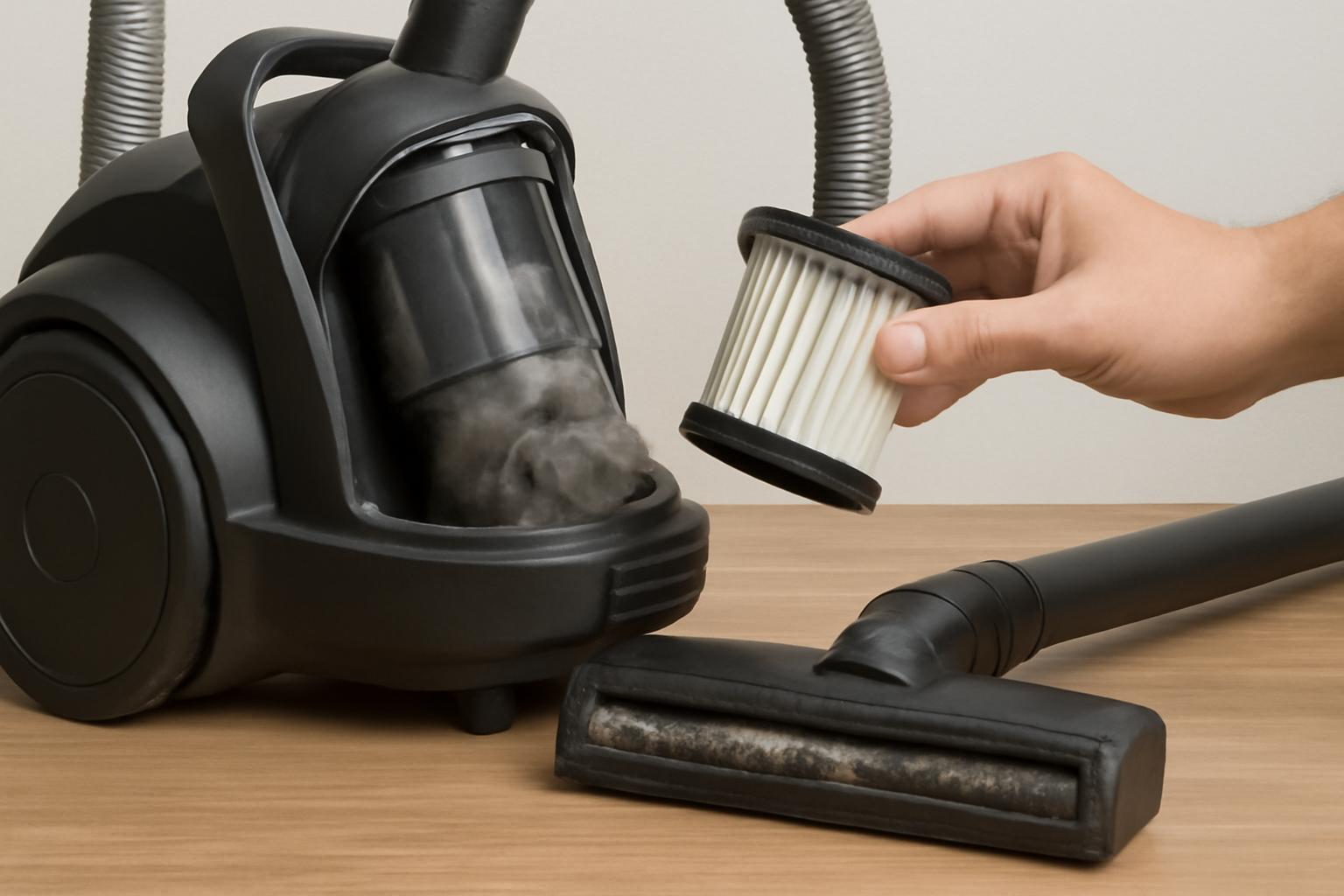
Durability is the foundation of brand trust in the vacuum cleaner industry. While advanced technology and materials matter, everyday user behavior plays a critical role in how long a vacuum truly lasts.
Lanxstar has long emphasized vacuum durability and proper usage habits for its distributors, helping partners reduce warranty costs and increase customer satisfaction through better product maintenance.
For European importers, distributors, and service engineers, promoting proper usage and maintenance habits is one of the simplest yet most effective strategies to extend product lifespan and improve profitability across vacuums procurement and vacuum cleaner distribution networks.
⚠️ 1. Why Durability Matters for Brands and Importers
A vacuum cleaner that breaks within a year doesn’t just mean a failed product—it signals a weak brand system.
Frequent returns, warranty replacements, and online complaints erode trust faster than any marketing campaign can rebuild it.
European consumers now expect devices like the 4 in 1 Cordless Smart Wet & Dry Vacuum Cleaner to last several years with consistent performance.
For importers and OEM partners, establishing usage education programs is no longer optional—it’s part of long-term brand strategy.
🧱 2. Common Causes of Early Vacuum Failure
Even the best machines fail prematurely when users neglect simple maintenance.
Here are the most common avoidable causes:
| Failure Type | Cause | Preventive Measure |
|---|---|---|
| Suction Loss | Clogged filters or dustbin overflow | Empty and clean regularly |
| Overheating | Blocked air paths, poor ventilation | Check vents and avoid long continuous use |
| Motor Burnout | Prolonged overuse under full load | Rest the motor every 20–30 mins |
| Hose Cracking | Repeated bending or stretching | Store hoses loosely, avoid tight coils |
| Battery Degradation | Overcharging cordless models | Use smart chargers, disconnect after full charge |
Understanding these root causes allows distributors to educate customers before problems occur.
🧩 3. Simple Habits That Make a Big Difference
Proper maintenance is not complicated—it’s consistent.
Here are five essential habits to help users keep vacuums running like new:
1️⃣ Empty the Dustbin Frequently
Overfilled dust containers block airflow, reducing suction and stressing the motor.
For bagless systems, cleaning after each use is best practice.
2️⃣ Clean and Replace Filters on Schedule
A HEPA Filter Vacuum Cleaner needs periodic washing or replacement to maintain efficiency.
Follow manufacturer timelines—usually every 3–6 months for heavy users.
3️⃣ Inspect Brushes and Rollers Regularly
Hair, threads, and fibers wrap around rollers and can damage bearings.
Use small scissors or included cleaning tools to remove debris.
4️⃣ Avoid Liquid Pickup in Dry Models
Non-wet models can short-circuit if liquids enter the chamber.
Always confirm if the model supports wet/dry operation before use.
5️⃣ Store Vacuums Properly
Keep units in a cool, dry place, avoid prolonged exposure to heat or moisture.
Portable models like Portable Vacuum for Travel should be stored with battery charge between 40–60%.
Good habits cost nothing—but can double a vacuum’s lifespan.
⚙️ 4. How Importers and Brands Can Promote Better User Habits
B2B distributors can drastically reduce warranty costs by integrating user education into the after-sales process.
Best Practices for Importers:
Include multilingual quick guides with maintenance visuals
Provide short tutorial videos on cleaning filters or replacing brushes
Train sales partners to emphasize maintenance during product demos
Offer digital maintenance reminders via app or QR code
These small educational investments result in fewer complaints and higher customer retention, forming the foundation of maintenance training for distributors and long-term brand partnerships.
🤖 5. The Rise of Smart Self-Maintenance Systems
Modern vacuums are becoming “smarter”—not just in suction control, but also in self-cleaning and maintenance alerts.
Devices like the Cordless Handheld Vacuum Cleaner or 4 in 1 Cordless Smart Wet & Dry Vacuum Cleaner already include:
Auto filter self-cleaning cycles
Clog detection alerts
Real-time motor temperature monitoring
App-based maintenance reminders
For importers, sourcing such products can reduce dependence on customer diligence while improving product reputation for vacuum performance retention over time.
💼 6. Maintenance Education = Competitive Advantage
Brands that teach customers how to care for their devices gain a powerful advantage in the European market.
Properly maintained vacuums:
Last longer (reducing warranty cost)
Perform more consistently (fewer complaints)
Strengthen perceived product quality
Distributors that embed maintenance training into their vacuum cleaner distribution programs build trust that competitors can’t replicate through advertising alone.
🌿 7. Sustainability and Longevity Go Hand in Hand
Durability is also sustainability.
A vacuum that lasts five years instead of two reduces waste and aligns with EU environmental goals.
Educating users to maintain their vacuums contributes directly to circular economy principles.
Longer product life = lower environmental impact = stronger brand value.
🚀 Conclusion: Maintenance Is the New Marketing
The secret to selling more vacuums isn’t only innovation—it’s education.
By promoting simple maintenance habits, importers and distributors not only protect their margins but also enhance customer trust.
Lanxstar empowers European partners with reliable vacuum solutions and maintenance expertise, ensuring every distributor and end-user benefits from sustainable, long-lasting performance.
When users treat their vacuums well, they treat your brand well too.
Because a well-maintained vacuum doesn’t just clean floors—it cleans your reputation.
📌 Hashtags (Lanxstar Related 50 Tags)
Lanxstar, VacuumCleaner, SmartVacuum, CordlessVacuum, WetDryVacuum, PortableVacuum, SelfCleaningVacuum, EnergyEfficientVacuum, HEPAVacuum, VacuumTechnology, VacuumParts, SuctionPower, AirflowDesign, CycloneSystem, DustCollector, NoiseControl, EcoFriendlyVacuum, EUStandards, CECertified, VacuumMotor, Procurement, Distribution, B2BVacuum, OEMVacuum, ODMVacuum, CommercialVacuum, HouseholdVacuum, IndustrialVacuum, VacuumInnovation, SmartCleaning, VacuumEngineering, BatteryTechnology, DustSeparation, FiltrationSystem, PortableCleaner, VacuumAccessories, HomeAppliance, ApplianceSupplier, VacuumManufacturing, VacuumTesting, QualityControl, LanxstarBrand, VacuumExport, VacuumImport, EUImporter, VacuumSupplier, VacuumMarket, VacuumSales, VacuumDesign, SustainableCleaning, ProfessionalVacuum, EuropeanVacuumIndustry
















